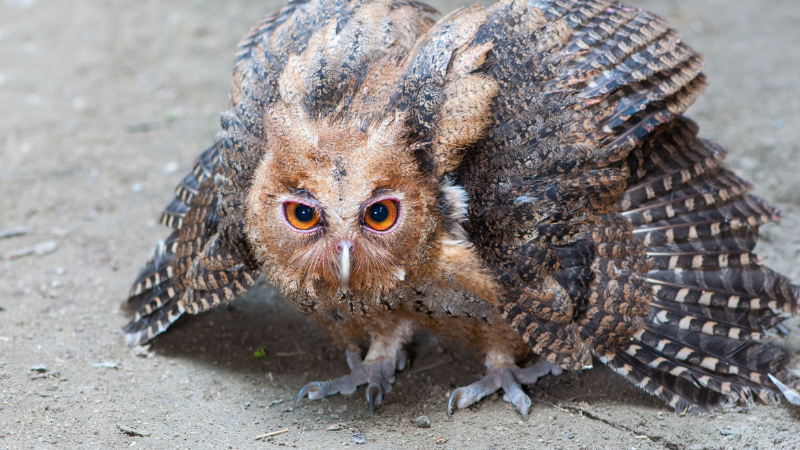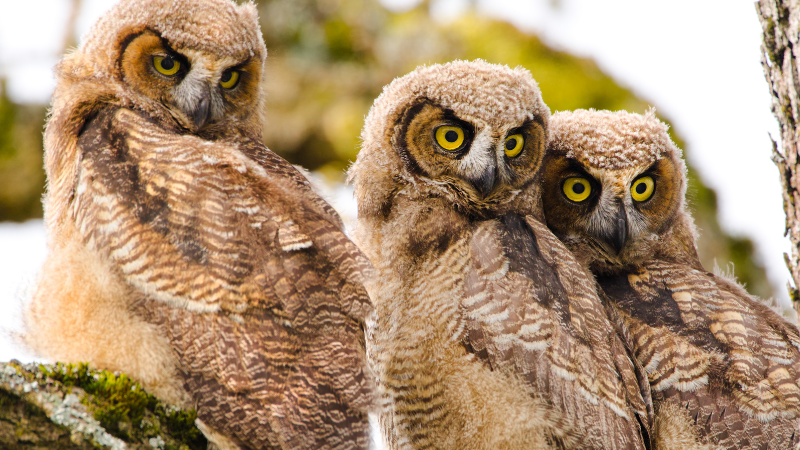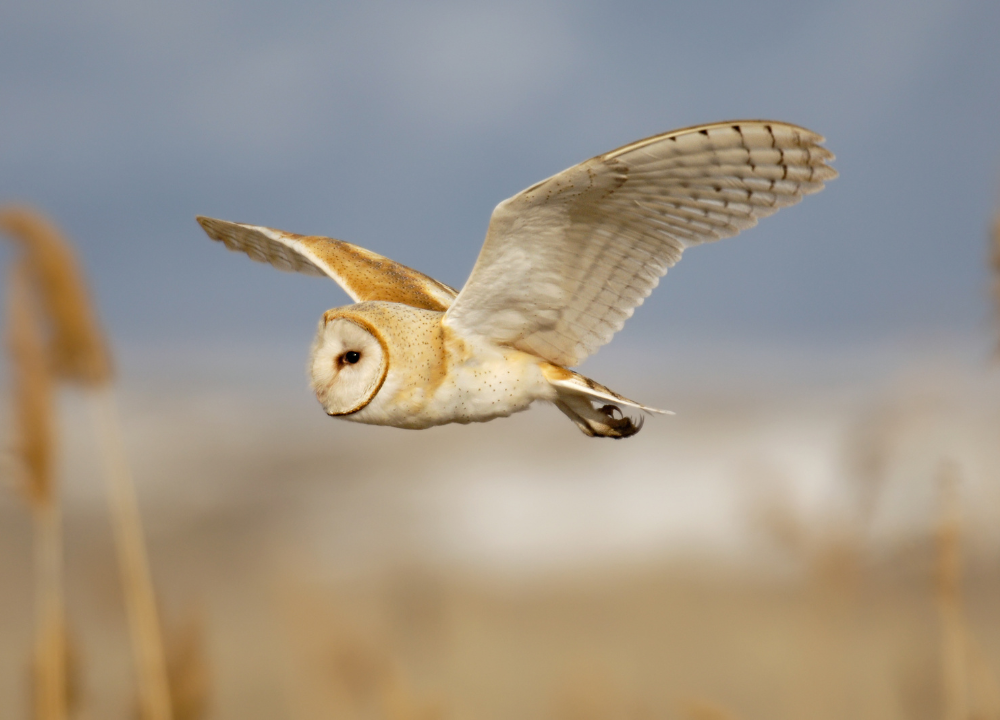Yes, owls eat ducks. Owls are predators that include ducks as part of their diet.
Owls are fascinating creatures known for their ability to hunt and capture prey in the dark. Among the various animals they prey on, ducks are a significant part of their diet. Ducks are water birds that reside in various types of wetlands, including lakes, ponds, and rivers.
These birds are a preferred meal for several owl species due to their relatively large size and abundance. Owls are known to swoop down from above and surprise ducks while they are swimming or resting near the water’s edge. The powerful talons of owls help them grasp and bring down ducks for a meal. So, if you were wondering if owls eat ducks, the answer is yes. Owls are fierce hunters that feed on a wide range of prey, and ducks are one of their preferred targets.
Diet Of Owls
Owls are fascinating creatures known for their silent flight and incredible hunting abilities. When it comes to their diet, owls are carnivores, primarily feeding on small mammals, birds, reptiles, and insects.
Types Of Prey
Owls have a diverse menu, preying on a variety of animals based on their size, availability, and geographic location. Let’s take a closer look at the different types of prey that owls commonly consume:
| Prey Type | Examples |
|---|---|
| Small mammals | Mice, voles, rats, shrews |
| Birds | Rodents, songbirds, waterfowl |
| Reptiles | Snakes, lizards, frogs |
| Insects | Beetles, moths, crickets |
These are just a few examples of the wide range of prey that owls might catch to satisfy their hunger.
Factors Influencing Prey Selection
Several factors come into play when owls are selecting their prey. Understanding these factors can help shed light on an owl’s hunting behavior:
- Habitat: Different habitats provide varying prey options. For example, owls in woodland areas are more likely to hunt small mammals, while those near water might target fish or waterfowl.
- Size: Owls have a diverse range of sizes, and this often determines the size of prey they can capture. Smaller owls, like the Northern Saw-whet Owl, prefer to hunt smaller prey like mice and insects.
- Activity patterns: Some owls are active during the day (diurnal), while others are active at night (nocturnal). Their activity patterns determine the available prey options.
- Seasonal variations: Prey availability can change with the seasons. Owls may adapt their diet accordingly, focusing on the most abundant prey at a given time.
- Opportunistic hunting: Owls are opportunistic hunters, meaning they seize available prey whenever it presents itself. Their diet can be influenced by this behavior.
These factors, combined with an owl’s exceptional vision, hearing, and nocturnal adaptations, enable them to be effective hunters in their respective environments. Owls play a vital role in maintaining the balance of ecosystems they inhabit.

Duck As Prey
When it comes to the diet of owls, one question that often arises is whether owls eat ducks. Ducks are not uncommon prey for certain species of owls, making them a potential meal in the wild. In this article, we will explore the topic of owls hunting ducks and shed some light on the fascinating dynamics of this predator-prey relationship.
Owls That Eat Ducks
Several species of owls have been observed to prey on ducks, showcasing the versatility and adaptability of these nocturnal hunters. While not all owl species include ducks in their diet, those that do exhibit impressive hunting skills and strategies that enable them to take on such formidable prey. Some of the owls known to hunt ducks include:
- Great Horned Owl
- Barn Owl
- Snowy Owl
These owl species possess the physical prowess and hunting techniques necessary to successfully target and capture ducks.
How Do Owls Hunt Ducks?
Owls employ various hunting tactics and adaptations to catch ducks, making each interaction a fascinating display of nature’s strategies at work. Here are some key elements to consider when understanding how owls hunt ducks:
- Nocturnal advantage: Owls are primarily nocturnal hunters, giving them an advantage when targeting ducks during the dark hours. The cover of darkness allows them to surprise their prey and utilize their specialized hunting abilities without detection.
- Silent flight: Owls are renowned for their almost noiseless flight thanks to their specialized feathers and wing structure. This silent flight enables them to approach ducks undetected, reducing the chances of escape.
- Ambush tactics: Owls often rely on ambush tactics to catch ducks. They patiently wait perched on a tree branch or any suitable vantage point near bodies of water where ducks frequent. When the perfect opportunity arises, they swiftly swoop down to seize their unsuspecting prey.
- Diverse diet: While ducks may be part of an owl’s diet, they also target a variety of other prey such as small mammals, amphibians, and other bird species. Their adaptability allows them to switch their food sources as needed.
- Powerful talons and beak: Owls possess strong talons and a sharp beak that aid in the capture and dispatching of their prey. These powerful tools are essential for gripping and killing ducks, ensuring a successful hunt.
It’s essential to realize that the hunting dynamics between owls and ducks are a natural part of the ecosystem. Although owls may occasionally prey on ducks, it’s important to respect the balance of nature’s intricate web.
| Owl Species | Main Prey |
|---|---|
| Great Horned Owl | Various mammals, birds, and ducks |
| Barn Owl | Small mammals, birds, and ducks |
| Snowy Owl | Small mammals, birds, and ducks |
Understanding the relationship between owls and ducks can offer valuable insights into the intricate balance of ecosystems. While owls may occasionally hunt ducks, they also contribute to the regulation of various wildlife populations, ensuring a healthy and diverse natural environment.

Impact On Duck Populations
Owls are fascinating creatures and have long been associated with wisdom and mystique. However, their dietary habits may raise questions when it comes to their impact on other bird populations. The question of whether owls eat ducks is a valid one, and its implications on duck populations are worth exploring. Let’s dive into the local effects on duck populations, the natural balance, and the conservation efforts surrounding this topic.
Local Effects On Duck Populations
When considering the impact owls have on duck populations, it is crucial to assess the local effects. Owls are skilled hunters, and their ability to catch ducks cannot be ignored. While smaller duck species may fall prey to certain owl species, larger ducks are generally more equipped to defend themselves against these predators.
However, it is important to note that the impact of owl predation on duck populations varies depending on several factors:
- The geographical location and climate
- The species of ducks and owls present
- The availability of alternative prey
- The overall health and size of the duck population
These factors contribute to determining the severity of the local effects of owl predation on duck populations. Therefore, it would be oversimplifying to make generalizations about the impact without considering these dynamics.
Natural Balance And Conservation Efforts
In nature, a delicate balance exists between predators and prey, ensuring the overall health and sustainability of ecosystems. Owls play a crucial role in maintaining this balance, and their predatory behavior helps control populations of various species, including ducks.
Conservation efforts focused on protecting duck populations recognize the importance of maintaining this natural balance. Efforts may include:
- Wetland preservation: Ducks rely on wetlands for nesting, feeding, and resting. Conserving wetland habitats provides essential resources and reduces vulnerability to predation.
- Creating predator-friendly landscapes: Implementing measures that maintain diverse habitats can support various species, including owls. This reduces the likelihood of concentrated predation on specific prey populations.
- Promoting awareness and education: By increasing public awareness about the importance of predator-prey relationships, conservation efforts can garner support to protect both ducks and their natural predators, including owls.
By acknowledging the role of owls in maintaining the natural balance and implementing conservation strategies, it is possible to safeguard duck populations while still appreciating the ecological role of these magnificent birds of prey.

Conservation Measures
Conservation measures play a crucial role in protecting the delicate balance of wildlife ecosystems, including the interactions between owls and ducks. By implementing effective measures, we can ensure the preservation of duck populations while minimizing any adverse impacts caused by owl predation. In this section, we will explore key strategies for safeguarding ducks from owl predation, focusing on protecting duck habitats, reducing human activities, and maintaining biodiversity.
Protecting Duck Habitats
One of the most effective ways to conserve ducks and reduce owl predation is by protecting their habitats. Ducks rely on specific nesting sites and wetland areas for breeding and raising their young, so conserving these habitats is paramount. By creating designated protected areas, such as national parks or wildlife reserves, we can safeguard important nesting grounds and ensure ducks have a safe space to reproduce and thrive.
In addition to protected areas, implementing land management practices that prioritize the preservation and restoration of wetlands can significantly benefit ducks. These practices may include reducing pesticide use, controlling invasive plant species, and implementing sustainable farming practices that minimize runoff into water bodies. Such measures not only create healthier habitats for ducks but also indirectly impact owl populations by encouraging a balanced ecosystem.
Reducing Human Activities
Human activities can inadvertently impact owl and duck interactions, so reducing these activities is crucial for their conservation. One of the main human activities that can disrupt the natural balance is habitat destruction through deforestation or urbanization. When trees are cut down or wetlands are drained, the habitats of both owls and ducks are compromised. By implementing measures that limit deforestation and urban expansion, we can mitigate the potential negative impacts on these species.
Maintaining Biodiversity
Maintaining biodiversity is key to ensuring the long-term survival of both owls and ducks. A diverse range of plant and animal species fosters a healthy ecosystem and provides sufficient food sources for owls and ducks alike. To promote biodiversity, it is essential to protect not only the habitats of these species but also the habitats of their prey and other plant and animal species that contribute to the overall balance.
In order to maintain biodiversity, another important aspect is preventing the introduction of invasive species. Invasive species can disrupt the natural food chain, affecting the availability of prey for owls and ducks. Implementing strict regulations and early detection systems can help prevent the spread of invasive species and preserve the ecological integrity of the ecosystem.
By adopting these conservation measures, we can strike a balance between the natural interactions of owls and ducks, allowing both species to coexist harmoniously within their shared habitat. Protecting duck habitats, reducing human activities, and maintaining biodiversity are all critical steps in preserving the delicate balance of our natural ecosystems.
Coexistence Of Owls And Ducks
Despite their contrasting nature, owls and ducks have managed to coexist in their shared habitats. This coexistence is influenced by various factors, including the adaptation of behavior to reduce predation and the beneficial effects of owls on ecosystems. Let’s delve deeper into each of these aspects:
Adapting Behavior To Reduce Predation
Owls are known for their nocturnal hunting skills and their preference for small mammals as prey. However, they occasionally take advantage of opportunities to prey on waterfowl, including ducks. To reduce predation, ducks have evolved certain behaviors, adapting to the presence of owls:
- Nocturnal Avoidance: Ducks tend to be less active during the owls’ hunting hours, minimizing their vulnerability.
- Group Formation: By sticking together in large groups, ducks increase their chances of detecting predators, including owls, at an early stage.
- Vigilance and Alarm Signals: Ducks maintain a constant alertness, watching out for any potential danger. They communicate warnings to one another, ensuring the entire group can take evasive action if an owl approaches.
Beneficial Effects Of Owls On Ecosystems
Owls play a vital role in maintaining the balance and health of ecosystems. Their presence and activities have several beneficial effects:
- Pest Control: Owls are natural pest controllers, preying on rodents and small mammals, which can otherwise cause damage to crops and gardens. By controlling these populations, owls help maintain a healthier and more sustainable ecosystem.
- Disease Prevention: Rodents can be carriers of various diseases. By keeping their populations under control, owls indirectly help prevent the spread of these diseases to other animals and even humans.
- Regulating Prey Populations: Owls help regulate the populations of their prey species by targeting the weaker or less-fit individuals. This prevents overpopulation and maintains a healthy balance within the ecosystem.
This delicate coexistence between owls and ducks highlights the intricate relationships embedded within nature. While owls may pose a potential threat to ducks, their presence also brings valuable benefits to the ecosystem as a whole.
Frequently Asked Questions For Do Owls Eat Ducks
How Do You Keep Owls Away From Ducks?
To keep owls away from ducks, here are a few steps to follow: 1. Install owl deterrents like scarecrows or reflective tape near the duck area. 2. Install protective structures like netting to keep owls out. 3. Provide shelter for the ducks during the night to minimize owl sightings.
4. Keep the area well-lit at night, as owls prefer darkness. 5. Ensure the ducks have places to hide, such as dense vegetation or structures.
What Animal Do Owls Eat The Most?
Owls primarily feed on small mammals such as mice, voles, and rats. They also eat birds, insects, and occasionally fish.
Do Owls Kill Birds?
Yes, owls do kill birds. They are skilled predators and hunt a variety of small mammals and birds.
Do Owls Eat Wood Ducks?
Yes, owls do eat wood ducks. Owls are birds of prey and have a diverse diet, which may include wood ducks among their food sources.
Conclusion
To sum up, owls are predators known for their ability to hunt a variety of prey, including ducks. With their sharp talons, keen eyesight, and silent flight, owls can ambush ducks with precision. While their diet primarily consists of small mammals, birds, and insects, they will not hesitate to seize the opportunity to capture a duck if presented.
Therefore, it is safe to say that ducks are indeed on the menu for owls.







